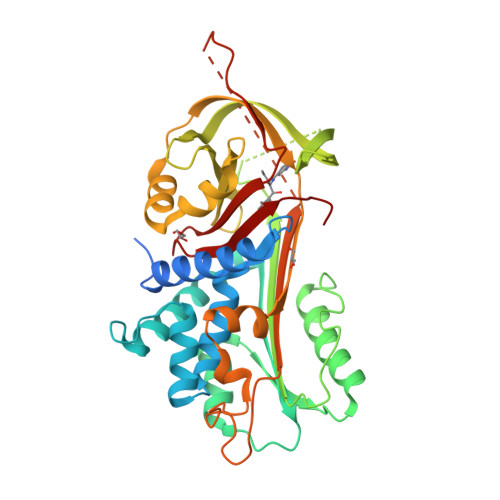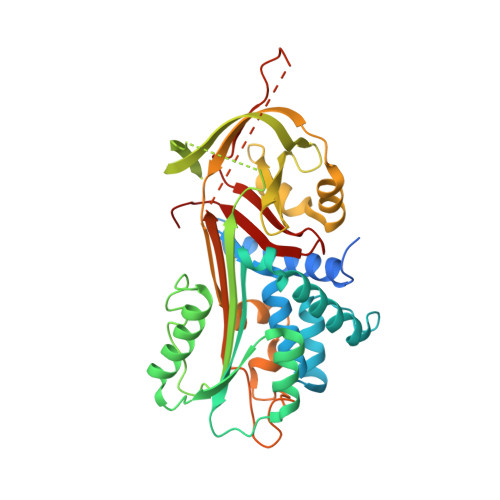The development of highly potent and selective small molecule correctors of Z alpha 1 -antitrypsin misfolding.
Liddle, J., Pearce, A.C., Arico-Muendel, C., Belyanskaya, S., Brewster, A., Brown, M., Chung, C.W., Denis, A., Dodic, N., Dossang, A., Eddershaw, P., Klimaszewska, D., Haq, I., Holmes, D.S., Jagger, A., Jakhria, T., Jigorel, E., Lind, K., Messer, J., Neu, M., Olszewski, A., Ronzoni, R., Rowedder, J., Rudiger, M., Skinner, S., Smith, K.J., Trottet, L., Uings, I., Zhu, Z., Irving, J.A., Lomas, D.A.(2021) Bioorg Med Chem Lett 41: 127973-127973
- PubMed: 33753261
- DOI: https://doi.org/10.1016/j.bmcl.2021.127973
- Primary Citation of Related Structures:
7NPK, 7NPL - PubMed Abstract:
α1-antitrypsin deficiency is characterised by the misfolding and intracellular polymerisation of mutant α1-antitrypsin protein within the endoplasmic reticulum (ER) of hepatocytes. Small molecules that bind and stabilise Z α 1 -antitrypsin were identified via a DNA-encoded library screen. A subsequent structure based optimisation led to a series of highly potent, selective and cellular active α1-antitrypsin correctors.
Organizational Affiliation:
GlaxoSmithKline, Gunnels Wood Road, Stevenage, Herts SG1 2NY, United Kingdom.




















